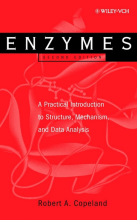Summary: Advanced Food Chemistry
- This + 400k other summaries
- A unique study and practice tool
- Never study anything twice again
- Get the grades you hope for
- 100% sure, 100% understanding
Read the summary and the most important questions on Advanced food chemistry
-
2 Proteins
This is a preview. There are 10 more flashcards available for chapter 2
Show more cards here -
What are the current classes of proteins and what are there properties? Tessa
- Whey proteins: Soluble over pH range, Heat denaturation.
- Soy proteins: insoluble at pH 4-6, Heat denaturation
- Casein: Insuluble at pH 4-6, (random coil)
- Gelatin: Reversilbe with heating (random coil)
- Egg protein: Heat denaturation.
-
What are the main requirements for protein preparations?
- Free of colour
- Free of taste
- Good solubility
- Free of colour
-
Solubility is an important properties of proteins. Looking at the origin of the animal proteins and their structure, what difference is solubility of fibrillar and globular proteins do you expect?
Fibrilar proteins tend to come form muscle tissue. Since muscles need to give structure to the body they would be insoluble under neutral pH (pH of blood). Globular proteins are found for instance in milk or eggs. Since these are aqueous systems, the proteins should have high solublility (under that pH and ionic strength). -
What is an important factor in isolation of proteins?
If they are in the dissolved state (milk) or dry state (soy bean / raw material) -
How does classification based on classes go?
You have 3 different classes based on secondary structure elements.
1. mainly alpha
2. alfa & beta
3. mainly beta (found a lot in lipid membranes)
These classes can be subdivided by there architecture. This is the spatial ordering of sencondary structure.
This can then be subdivided in topology. Somilar folding arrangements. -
Where does the choice of protein separation method depends on?
Optimal balance between removing as many impurities, while retaining as much of the proteins as possible -
How does the classification based on super-families go?
Different types of proteins are divided based on there sturucture and evolution. For instance goat whey and cow whey. -
How does classification based on solubility go?
You start with an insoluble product (wheat)
You extract proteins with different solvents and classify them on in winch solvent they solubilize. -
How does classification based on insolubility?
You start with a soluble product (milk)
You add different slovens and she which with wich solvent the protein becoms insoluble. -
How does classification based on structure go?
The different structures are:- globular proteins (e.g. beta-lactoglobulin, soy proteins)
- fibrillar proteins (e.g. collagen, tropomyosine)
- random coil proteins (e.g. caseins)
- other proteins (e.g. gluten)
- Higher grades + faster learning
- Never study anything twice
- 100% sure, 100% understanding
Topics related to Summary: Advanced Food Chemistry
-
Proteins - Sources of proteins and protein isolation - soy
-
Proteins - Sources of proteins and protein isolation - egg
-
Proteins - Protein interactions
-
Proteins - Protein denaturation, protein stability
-
Lipids - Review
-
Lipids - Analysis
-
Lipids - B. Sources
-
Lipids - C. Two sources - Palm
-
Lipids - D. Isolation (extraction) of fats and oils
-
Lipids - E. Refining of fats and oils
-
Lipids - F. Physical characteristics of fats
-
Lipids - G. Modifications of fats and oils - Fractions
-
Lipids - G. Modifications of fats and oils - Hydrogenation
-
Lipids - G. Modifications of fats and oils - Intereserification
-
Phenolic Compounds - What are phenolic Compounds
-
Phenolic Compounds - Isolation of phenolic compounds
-
Phenolic Compounds - Case 2: potato - Reaction with proteins
-
Phenolic Compounds - Case 2: potato - Reaction with sulfite
-
Phenolic Compounds - Case 2: potato - Enzyme and sulfite
-
Polysacharides































